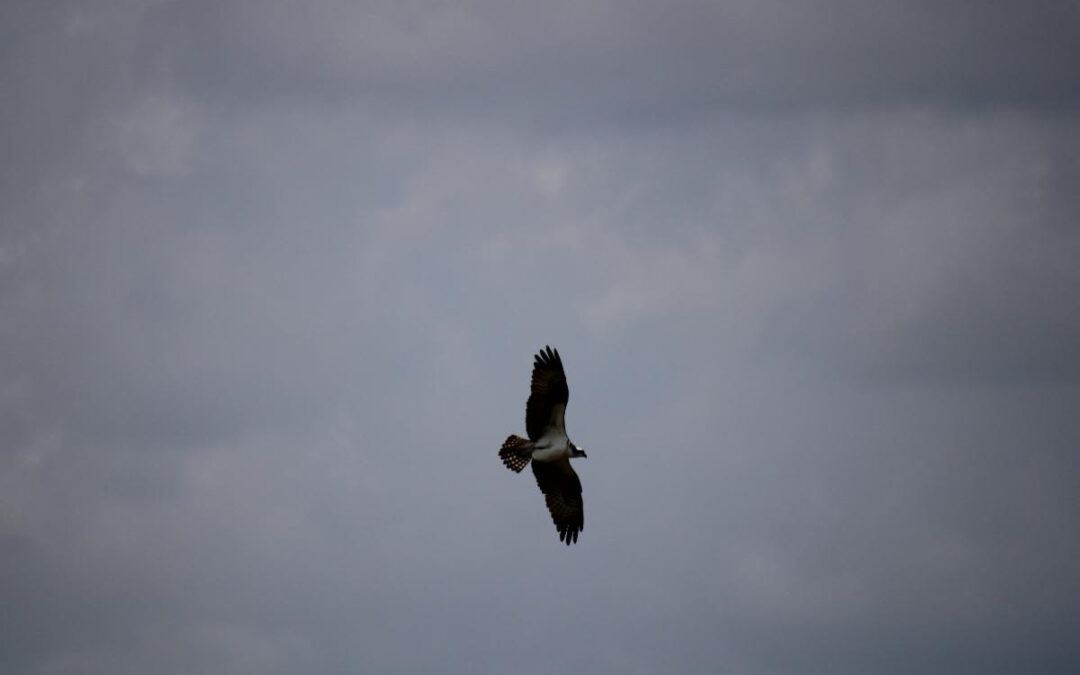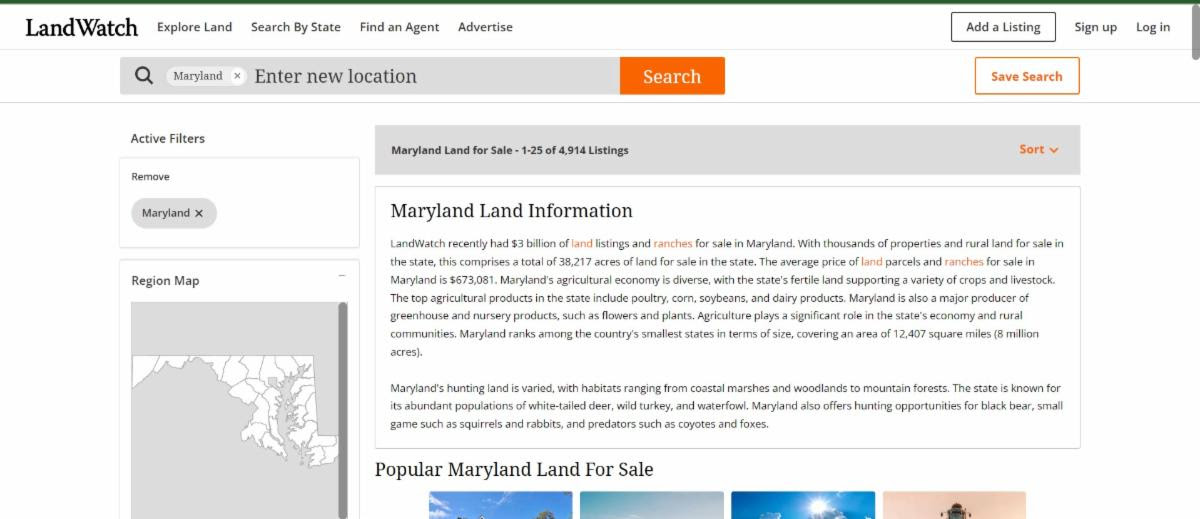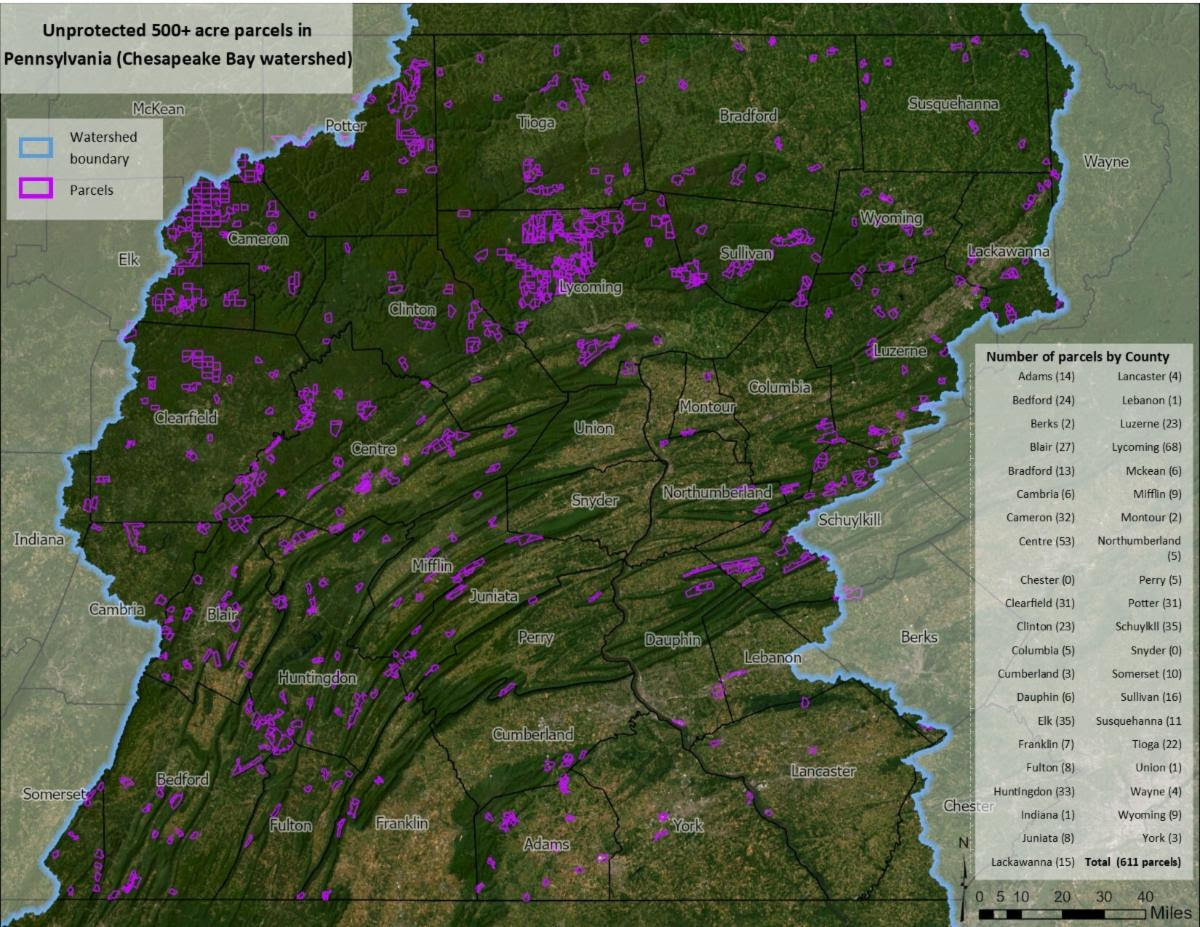An osprey pictured over Jug Bay Wetlands Sanctuary in Lothian, MD.
Written by Mike Bonnell
The Chesapeake Conservation Partnership strives to help partners accelerate conservation towards our ambitious goal of conserving 30% of the land in the Bay watershed by 2030. To get big points on the board and protect as much land as possible in service of that goal, we need to use all of the tools at our disposal. Since so much of the watershed is privately owned, voluntary conservation and land acquisition from willing landowners is paramount. One of the biggest opportunities to permanently protect land occurs only when a landowner is ready to sell it. In a perfect world, acquisitions happen through long-term relationship building with landowners and are prioritized through proactive searching out of potential areas for protection. But conservation organizations are often capacity strained and need tools and tactics to be nimble and ready when opportunity knocks. Partners often have highly desired properties on their conservation radar screens, but lack capacity to track all of the opportunities that can arise in their region through changes in landowners or sales.
What if a new large parcel, in a high-priority area, becomes available tomorrow? Partners have found different tools and tactics to help them find out about it as quickly as possible and advance the important work that they are already doing.
One such tool is Landwatch.com, which is an online rural land and farm sale search tool. It is part of the nationwide Land.com network, which includes Landwatch, Land.com and Land and Farm. What makes Landwatch different is its focus on undeveloped properties and helpful filtering tools. Users can quickly see parcels available for sale by size (i.e 500+ acres) in a state or county.
Chesapeake Progress estimates that approximately 22% of the land in the watershed has been protected. To protect that final 8% towards our 30% goal over the next seven years will require as many large parcels as possible. Since it is often easier to conserve one large parcel than many small parcels with many different owners, the ability to sort by parcel size, in order to pinpoint the largest potential projects available is useful.
Searching by state provides important summary info like available acreage and average cost, as well as allows for sorting by the type of land use on the property. Cross-referencing these sources with resources like the Chesapeake Conservation Atlas and the Chesapeake Bay Program targeting tools portal can shed light on available areas that are also pivotal for the health of the bay and the quality of the ecosystem services it provides.
CCP can also be a resource, and partners can provide a wealth of internal tools to identify land for conservation. For example, a recent CCP meeting in conjunction with the Pennsylvania Department of Conservation and Recreation employed a map from the Chesapeake Conservancy breaking down all parcels in the state and watershed that are larger than 500 acres, and have not been reported as permanently protected to the Chesapeake Bay Program. While that map alone doesn’t pinpoint land actually available, cross-referencing with sites like those in the Land.com network, as well as other tools like the CCP Atlas will allow partners to see areas that could be focused on and prioritized for protection.
Map identifying all unprotected parcels larger than 500 acres in the Pennsylvania section of the watershed. Map is for discussion purposes only.
Partnerships outside traditional land trusts and agencies also allow for increased capacity for organizations to find available parcels, in terms of staff time and shared technical expertise. While many organizations may not have the hours to dedicate to actively looking for parcels, forming relationships with those already doing that work can bring needed assistance and allow for increased efficiency between organizations.
Partners of the CCP, like Eastern Shore Land Conservancy (ESLC) and Piedmont Environmental Council, form relationships with real estate agents, community members and other people that increase their organization’s awareness of what’s out there. David Satterfield, director of land conservation for ESLC stated “Our strong connection to the community, along with multiple board members who are actively talking us up within the community, has allowed us to access opportunities that the broader community never sees.” Board members are also influential for the Piedmont Environmental Council, as they have real estate agents and attorneys on their board who live in and are active in their communities and point out areas of potential improvement.
The Capital Region Land Conservancy uses state-specific tools like the Virginia Natural Heritage Data Explorer and also has relationships with planning and park staff who stay more up-to-date on available parcels. At a state agency level, the PA DCNR relies on close relationships with land trusts in the community, as well as using sites like Landwatch.
While the goal of conserving 30% of our watershed by 2030 isn’t shared by everyone, we can agree that there are good ways to help accelerate the pace of land conservation here in the Bay watershed. With historic amounts of federal funding coming down the pike, organizations want to be well-positioned to make use of and be ready for money as it becomes available. As conservation practitioners position themselves with the current awareness of funding, on-the-ground opportunities, partner relationships and otherwise prepare for fast action, more stars will align in favor of land protection. Being as proactive as possible serves to protect more acres faster and also pave the way for future projects and partnerships. Tools like Landwatch, the Chesapeake Atlas and the CBP Targeting Tools portal allow for a more active search of the available areas that really matter to the watershed. Forming tight-knit community partnerships, as well as good working relationships with real estate agents, planners and other individuals in conservation-adjacent positions allows for wide coverage and knowledge of future availability. Remaining aware of the best ways to move forward allows our partners to stay nimble and capitalize on as many available parcels as possible on our path to conserve the watershed we call home.
Photo Credit:
- Mike Bonnell
- Landwatch
- Louis Keddell / Chesapeake Innovation Center
Lightning Update is a regular communication of the Chesapeake Conservation Partnership. Any opinions expressed are those of the authors and do not necessarily reflect positions of the Partnership or member organizations.
To share a success story, news, or important event, send your information to:
Support for the Chesapeake Conservation Partnership is provided by:
National Park Service Chesapeake
EPA Chesapeake Bay Program
USDA Forest Service
Pennsylvania Department of Conservation & Natural Resources
Maryland Department of Natural Resources
Virginia Outdoors Foundation
US Fish & Wildlife Service
Chesapeake Conservancy
The Chesapeake Conservation Partnership is co-convened by:






